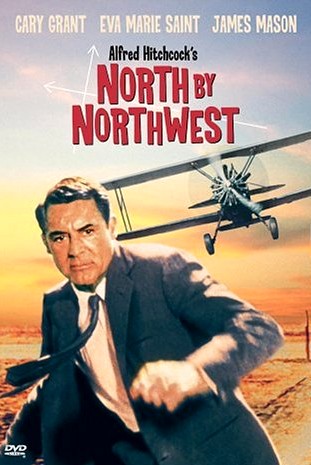 What’s there to be said of a film like “North by Northwest,†which was originally released more than 50 years ago? Well, it’s a film that’s widely considered a classic of the thriller genre, as well as one of the crown jewels of the master of suspense himself, Alfred Hitchcock, not to mention one that’s been referenced ad nauseam, both jokingly and lovingly. What’s to be said is that “North by Northwest†is a work of precision, a piece of fine-tuned filmmaking that is just as thrilling today as it was when it was released those many years ago.
What’s there to be said of a film like “North by Northwest,†which was originally released more than 50 years ago? Well, it’s a film that’s widely considered a classic of the thriller genre, as well as one of the crown jewels of the master of suspense himself, Alfred Hitchcock, not to mention one that’s been referenced ad nauseam, both jokingly and lovingly. What’s to be said is that “North by Northwest†is a work of precision, a piece of fine-tuned filmmaking that is just as thrilling today as it was when it was released those many years ago.
The film begins by throwing you right into the mix, as Saul Bass’ credit sequence accompanied by Bernard Herrmann’s urgent score wakes you up and compels you into a world of intrigue and false identities. As he does in a lot of his films, Hitchcock skirts by with a minimum of set up and dives right into the story.
We are quickly introduced to our protagonist, Roger Thornhill (Cary Grant, aka Archibald Leach), a mild-mannered Madison Avenue advertising executive who is about to get in way over his head. During an awkward interrogation with chief bad guy Philip Vandamm (James Mason), we get our first inkling that people may not be who they seem to be. After a botched fake suicide and a frame-up for a murder at the United Nations, Thornhill goes on the run in search of a mirage by the name of George Kaplan. Over the course of his misadventures, he hooks up with a steely blonde with hidden motives (played admirably with scintillating sass by Eva Marie Saint), gets chased by a crop duster in the Midwest and hangs for dear life off of Mount Rushmore.
This is a movie of misdirection – Ernest Lehman’s tight script pushes us forward, and we don’t know where we might end up from the outset. We, like Thornhill, are constantly at a loss, as the world around us doesn’t respond to our logical actions. It feels as if there are greater forces at work, and we are merely pawns in some game. Things we might otherwise attribute to chance and coincidence are in turn shown to be carefully orchestrated.
This ties into what might be considered a flaw of the picture. Everything happens for a reason, no matter what Thornhill tries to do. When he does what he wants to do, it ends up serving the interests of the bad guys, and when he does what they expect him to, he somehow comes out on top. If you really think about it, how can a middle-aged man defeat the seemingly all-knowing forces arrayed against him?
Perhaps we don’t think about these things because we are being so skillfully propelled forward, never allowed to stop. We also easily see ourselves in the shoes of Thornhill, lost in circumstances we don’t understand, even though we can’t hope to be half as smooth and suave as Grant is in the role. Saint sets the screen on fire opposite him as they duel each other with dialogue that must have been on the edge of acceptable during a more conservative time. They offer the production an air of believability that allows us to overlook a couple of contrivances.
Like much of Hitchcock’s catalog of classic films, “North by Northwest†stands the test of time. Seeing it, it becomes obvious why so many movies gleefully reference it and try to ape its trademark moments. Movies like this are why people went to the cinema and continue to do so. It transports you into a world of danger and suspense, where people might not be what they seem. It also reminds you to never try to climb Mount Rushmore without sufficient climbing equipment.

Leave a Reply